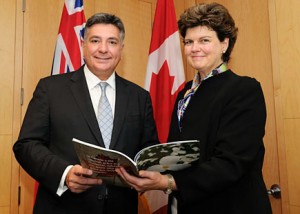
The Federal Skilled Worker Program will not have a priority occupations list when it restarts on May 4th according to a tweet made by Citizenship and Immigration Minister Jason Kenney last August (Twitter)
A 140 character tweet from Citizenship and Immigration Minister Jason Kenney last August may have answered one of the most pressing questions about the updated rules of the Federal Skilled Worker Program (FSWP) when it relaunches in May: will it be limited to a select group of occupations?
The FSWP as it exists now is restricted to individuals qualified in one of the vocations on the priority occupations list.
The program is scheduled to begin accepting applications again in May of this year after a 10 month moratorium, and is expected to have a wide range of changes made to its selection rules.
One aspect of the program’s selection rules that was uncertain was whether a priority occupation list would exist under the revamped rules post-May 4th.
The Minister’s tweet on August 18th 2012, seen below, suggests it won’t:
@wandesure The new Skilled Worker Program will be limited to applicants in NOCs 0, A, & B, but won't be limited to particular occupations.
— Jason Kenney 🇺🇦🇨🇦 (@jkenney) August 18, 2012
Instead, applicants will be required to get an Educational Credential Assessment (ECA) from one of the designated credential assessment organizations to determine their educational credentials’ equivalent value in Canada.

